VW Transporter Bus vs Bentley Flying Spur – Differences & prices compared
Compare performance, boot space, consumption and price in one view.
Find out now: which car is the better choice for you – VW Transporter Bus or Bentley Flying Spur?
The VW Transporter Bus (Bus) comes with a Diesel, Petrol, Plugin Hybrid or Electric engine and Manuel or Automatic transmission. In comparison, the Bentley Flying Spur (Sedan) features a Plugin Hybrid or Petrol engine with Automatic transmission.
When it comes to boot capacity, the VW Transporter Bus offers 763 L, while the Bentley Flying Spur provides 420 L – depending on how much space you need. If you’re looking for more power, decide whether the 286 HP of the VW Transporter Bus or the 550 HP of the Bentley Flying Spur suits your needs better.
In terms of consumption, the values are 22.40 kWh0.80 L per 100 km for the VW Transporter Bus, and 3.30 L for the Bentley Flying Spur.
Price-wise, the VW Transporter Bus starts at 41500 £, while the Bentley Flying Spur is available from 180900 £. Compare all the details and find out which model fits your lifestyle best!
VW Transporter Bus
The VW Transporter Bus from Volkswagen Commercial Vehicles is a versatile and reliable choice for both business and leisure purposes. It offers ample space and a flexible interior, making it ideal for transporting passengers or goods comfortably. The vehicle combines practicality with modern styling, ensuring it meets the demands of everyday use while maintaining an eye-catching appearance.
detailsBentley Flying Spur
The Bentley Flying Spur embodies a unique blend of luxury and performance, offering an opulent interior crafted with the finest materials. This grand tourer exudes elegance and sophistication, making it an ideal choice for those who appreciate both style and substance. With its smooth handling and powerful engine, the Flying Spur provides an unparalleled driving experience that truly sets it apart in the world of luxury automobiles.
details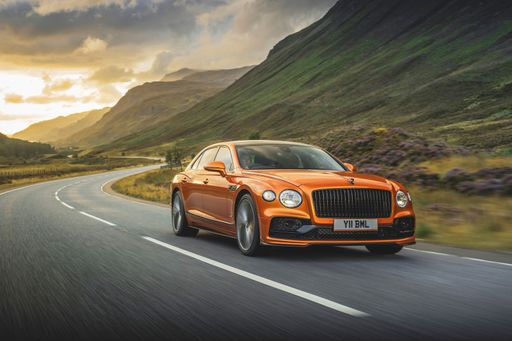 @ bentleymedia.com
@ bentleymedia.com
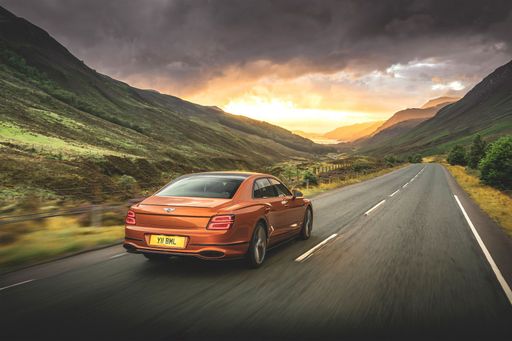 @ bentleymedia.com
@ bentleymedia.com
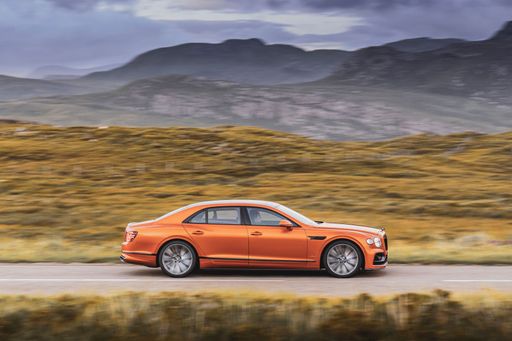 @ bentleymedia.com
@ bentleymedia.com
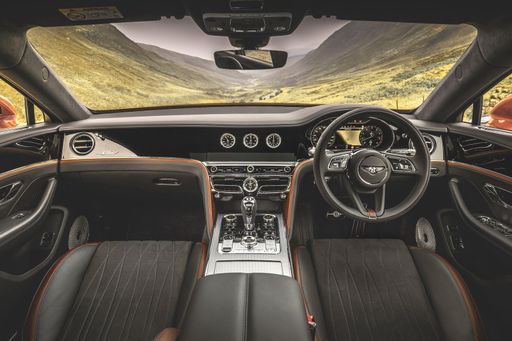 @ bentleymedia.com
@ bentleymedia.com
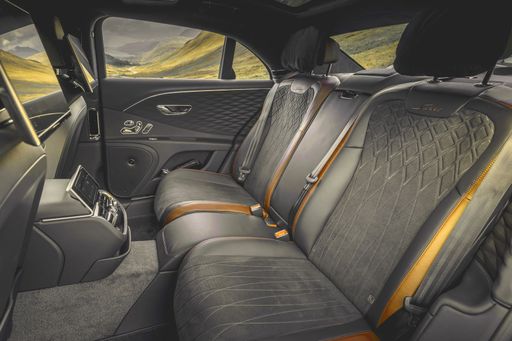 @ bentleymedia.com
@ bentleymedia.com

|
|
|
|
|
Costs and Consumption |
|
|---|---|
|
Price
41500 - 85100 £
|
Price
180900 - 186300 £
|
|
Consumption L/100km
0.8 - 9.2 L
|
Consumption L/100km
3.3 - 12.7 L
|
|
Consumption kWh/100km
22.4 - 24.9 kWh
|
Consumption kWh/100km
-
|
|
Electric Range
87 - 324 km
|
Electric Range
41 km
|
|
Battery Capacity
11.8 - 63.8 kWh
|
Battery Capacity
18 kWh
|
|
co2
0 - 229 g/km
|
co2
75 - 288 g/km
|
|
Fuel tank capacity
45 - 60 L
|
Fuel tank capacity
80 - 90 L
|
Dimensions and Body |
|
|---|---|
|
Body Type
Bus
|
Body Type
Sedan
|
|
Seats
4 - 8
|
Seats
4
|
|
Doors
4 - 5
|
Doors
4
|
|
Curb weight
1998 - 2620 kg
|
Curb weight
2330 - 2505 kg
|
|
Trunk capacity
0 - 763 L
|
Trunk capacity
420 L
|
|
Length
4973 - 5450 mm
|
Length
5316 mm
|
|
Width
1941 - 2032 mm
|
Width
2013 mm
|
|
Height
1907 - 1997 mm
|
Height
1483 mm
|
|
Payload
330 - 1143 kg
|
Payload
525 - 650 kg
|
Engine and Performance |
|
|---|---|
|
Engine Type
Diesel, Petrol, Plugin Hybrid, Electric
|
Engine Type
Plugin Hybrid, Petrol
|
|
Transmission
Manuel, Automatic
|
Transmission
Automatic
|
|
Transmission Detail
Manual Gearbox, Automatic Gearbox, Dual-Clutch Automatic
|
Transmission Detail
Dual-Clutch Automatic
|
|
Drive Type
Front-Wheel Drive, All-Wheel Drive, Rear-Wheel Drive
|
Drive Type
All-Wheel Drive
|
|
Power HP
110 - 286 HP
|
Power HP
544 - 550 HP
|
|
Acceleration 0-100km/h
7.4 - 16.9 s
|
Acceleration 0-100km/h
4.1 - 4.3 s
|
|
Max Speed
112 - 200 km/h
|
Max Speed
285 - 318 km/h
|
|
Torque
310 - 415 Nm
|
Torque
750 - 770 Nm
|
|
Number of Cylinders
4
|
Number of Cylinders
6 - 8
|
|
Power kW
81 - 210 kW
|
Power kW
400 - 404 kW
|
|
Engine capacity
1498 - 2488 cm3
|
Engine capacity
2894 - 3996 cm3
|
General |
|
|---|---|
|
Model Year
2024 - 2025
|
Model Year
2021 - 2022
|
|
CO2 Efficiency Class
G, F, B, A
|
CO2 Efficiency Class
B, G
|
|
Brand
VW
|
Brand
Bentley
|
VW Transporter Bus
The New Era of Transport: VW Transporter Bus T7
The VW Transporter Bus T7 has carved a niche in the automotive world as an exemplar of versatility and innovation. Easily sociable with its iconic predecessors, the Transporter Bus T7 reinvigorates the brand’s lineup with improved efficiency, top-notch technologies, and a design that balances practicality with modern aesthetics. Whether it's a family outing or a business venture requiring ample space and comfort, the T7 is engineered to deliver on all fronts.
Technical Marvels Under the Hood
The heart of the VW Transporter Bus T7 is a range of engines tailored to satisfy a variety of driving preferences. Leading the charge is the 2.0 TDI Diesel engine, meticulously crafted in both 110 HP and 150 HP outputs. This engine promises not only commendable power but also impressive fuel efficiency, with consumption figures ranging from 6.3 to 8.7 liters per 100 kilometers, depending on the version. For those enthralled by gasoline engines, the 2.0 TSI OPF Petrol variants deliver robust power at 204 HP, complemented by a smooth automatic gearbox.
Driving Dynamics and Performance
Performance meets reliability with the VW Transporter Bus T7's transmission options. The manual gearbox stands ready for those who prefer a connected, tactile driving experience, while the advanced automatic and double-clutch gearboxes ensure seamless gear shifts for a relaxed drive. Front-wheel drive configurations are standard, yet the all-wheel-drive variants offer enhanced stability and traction in diverse driving conditions.
Spacious Comfort and Ergonomics
Space management is quintessential in the Transporter Bus T7, providing various seating configurations ranging from five to eight seats. Designed with user-centricity in mind, the interior blends functionality with comfort — a testament to Volkswagen's commitment to ergonomic design. An extensive list of trims, including the Life, Style, and Ocean DSG variants, allows potential owners to tailor their Transporter Bus to their specific needs and preferences.
Modern Innovations and Connectivity
The T7 isn't just about transportation; it's about creating an experience. The latest model embodies state-of-the-art technology with intuitive infotainment systems and connectivity solutions. An array of safety features ensures peace of mind on the road, boasting adaptive cruise control, lane-keeping assist, and sophisticated sensor technologies which make every journey as safe as it is enjoyable.
Fuel Efficiency and Environmental Consideration
Volkswagen has taken strides in reducing the environmental footprint of the Transporter Bus T7. With CO2 emissions efficiency marked between classes F and G, the T7 nonetheless demonstrates a commitment to sustainability. Its intelligent design and advanced engineering reduce fuel consumption without compromising performance, ensuring a greener ride while keeping operation costs manageable.
A Timeless Design for Modern Times
Volkswagen's design philosophy stands clear in the Transporter Bus T7. The exterior impresses with its dynamic lines and contemporary aesthetics — every inch is crafted to convey strength and purpose. The dimensions, with lengths measuring between 4973 mm and 5450 mm, coupled with widths around 1941 mm and a height reaching up to 1972 mm, make the T7 both an admirable presence and a practical choice for urban and rural settings alike.
In conclusion, the VW Transporter Bus T7 represents a harmonious blend of performance, innovation, and versatility. It's a vehicle engineered for those who require functionality wrapped in modern mechanics and technology, setting a new standard in the art of transporting both people and ideas into the future.
Bentley Flying Spur
Introducing the Bentley Flying Spur: A Masterpiece of Luxury and Performance
The Bentley Flying Spur is a symbol of automotive excellence, blending opulence with remarkable engineering prowess. As a flagship model for Bentley, the Flying Spur embodies the essence of British luxury and cutting-edge automotive innovation. In this article, we delve into the technical aspects and innovations that make the Bentley Flying Spur an extraordinary vehicle in the luxury sedan market.
Exquisite Design and Engineering
The Flying Spur's design is a testament to Bentley's commitment to craftsmanship and elegance. With a length of 5316 mm and a width of 2013 mm, this grand saloon exudes presence on the road. The interior is equally impressive, providing comfortable seating for four, surrounded by the finest materials and state-of-the-art technology.
Powertrain Choices: Efficiency and Performance
The Bentley Flying Spur offers a choice between a Plug-in Hybrid and a V8 petrol engine, both equipped with an automatic transmission and an all-wheel-drive system. The hybrid variant combines a 6-cylinder engine with an electric motor, providing a total output of 544 PS. It boasts a remarkable fuel consumption of just 3.3 L/100km and an electric-only range of 41 km, highlighting Bentley's commitment to sustainability without sacrificing luxury.
On the other hand, the V8 engine delivers a breathtaking 550 PS, ensuring an exhilarating driving experience, with a fuel consumption of 12.7 L/100km. This variant showcases Bentley's prowess in engineering powerful yet smooth-running engines.
Performance and Dynamics
The Flying Spur impresses with its remarkable performance figures. Accelerating from 0-100 km/h takes a mere 4.1 to 4.3 seconds, depending on the powertrain choice, while its top speed ranges from 285 to 318 km/h. These figures are a testament to the car's superb engineering and the seamless integration of power and handling.
Innovative Features for the Discerning Driver
With cutting-edge features like a high-capacity battery of 18 kWh in the hybrid model and advanced driving aids, the Flying Spur ensures an unparalleled driving experience. The vehicle's CO2 emissions range from 75 to 288 g/km, reflecting Bentley's efforts towards achieving better environmental efficiency despite its robust performance.
Comfort and Technology
The interior of the Bentley Flying Spur is a haven of luxury, featuring state-of-the-art infotainment systems and the finest leather craftsmanship. With a spacious boot capacity of 420 L, this luxury saloon is as practical as it is indulgent.
The Flying Spur also incorporates the latest in driver assistance and connectivity technologies, ensuring that every journey is not only luxurious but also safe and connected.
A Worthy Investment in Luxury
Priced between €211,000 and €217,300, the Bentley Flying Spur is an investment in unparalleled luxury and innovation. It offers a unique blend of power, efficiency, and comfort, making it an ideal choice for those who seek the very best in automotive excellence.
In conclusion, the Bentley Flying Spur stands as a beacon of luxury and innovation in the automotive industry, providing an experience that is both indulgent and exhilarating for the discerning driver.
The prices and data displayed are estimates based on German list prices and may vary by country. This information is not legally binding.
